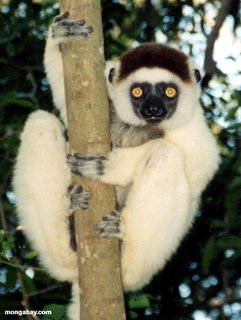There's a general sense, quite well founded, that the earth's biodiversity is in decline. Species are being lost forever, and human activity is usually to blame. Just about everyone wants to do something about it, but where to begin?
Broad steps need to be taken, but a more specific approach is to single out those species that face imminent extinction. If you can save some of those animals and plants, you've done something to stop biodiversity loss.
That's the thinking behind a study by scientists from a coalition of conservation groups, led by Taylor H. Ricketts of the World Wildlife Fund. The study, published in The Proceedings of the National Academy of Sciences, found 794 species of mammals, reptiles, amphibians, birds and conifers that are on the brink of disappearing....
Of the 595 sites, only 203 are fully contained within a protected area, the study found. More than 40 percent of the sites have no protections at all.
Dr. Ricketts said he hoped the study would encourage governments and groups to take action, first by acquiring or setting aside conservation land. "It's a great set of sites to address individual extinctions," he said. "Conserving the remaining bits of habitat for these species is the no-brainer first thing to do."
 Sifaka Lemur. Photo: Rhett Butler (thanks to wildmadagascar.org)
Sifaka Lemur. Photo: Rhett Butler (thanks to wildmadagascar.org)
No comments:
Post a Comment